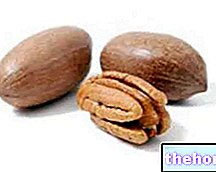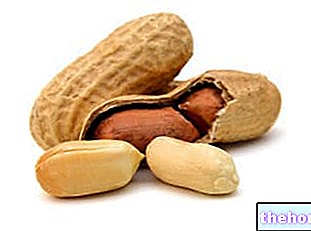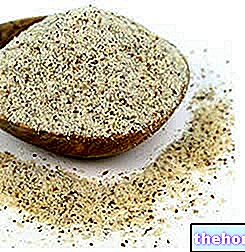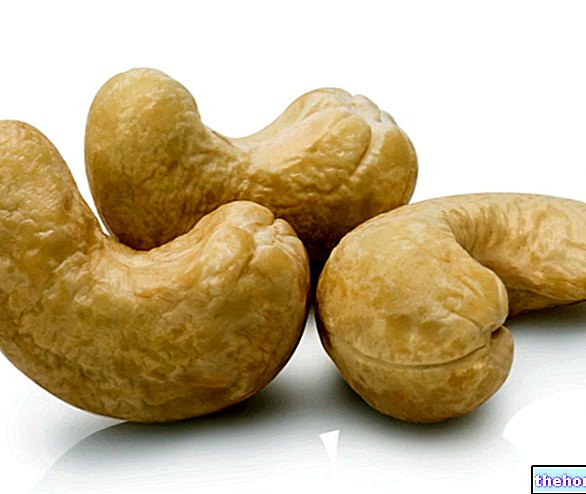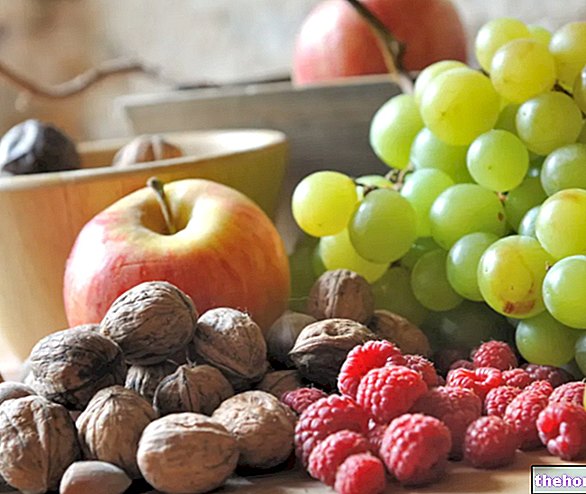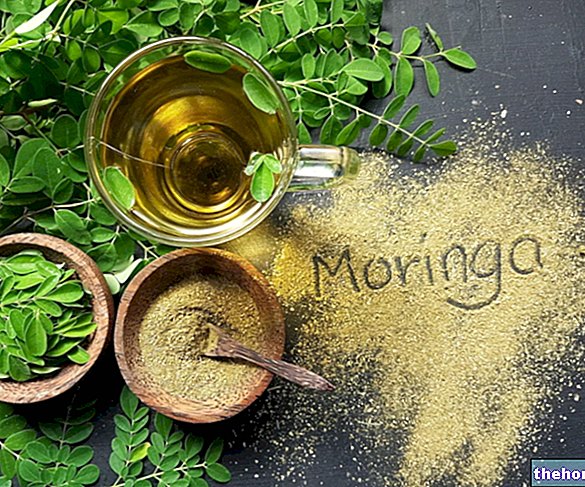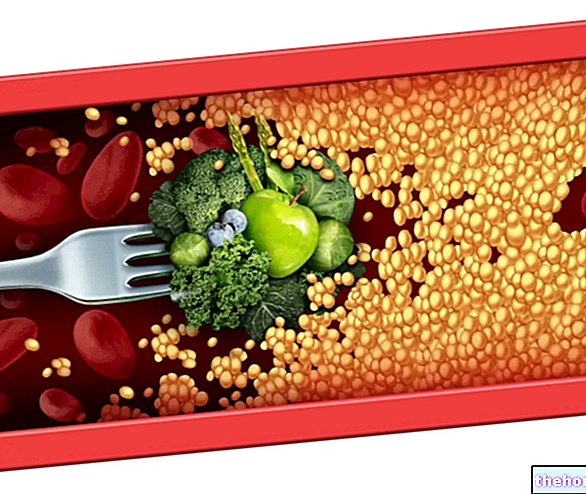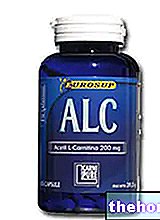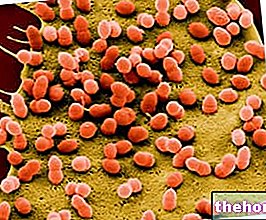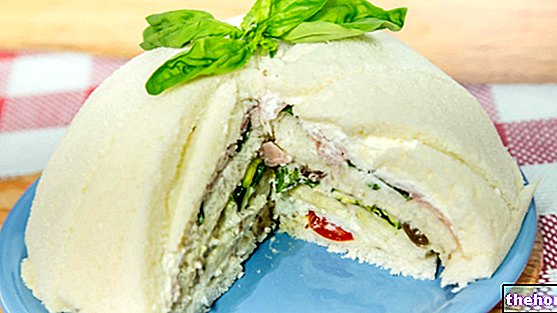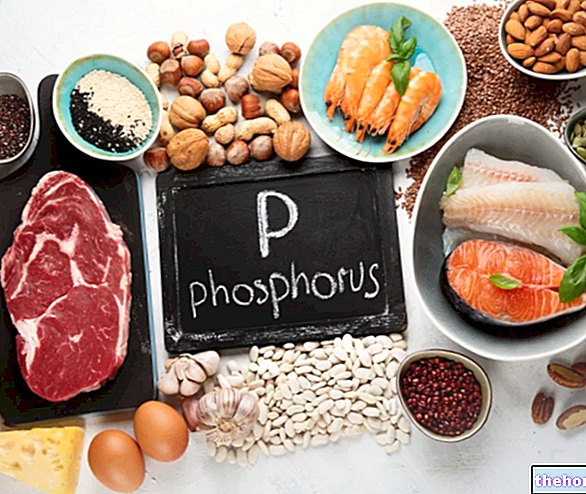Generality
The nuts they are the fruit of the "fruit nut or white walnut" plant. Similarly to pine nuts, almonds, pistachios, etc., the walnut is a seed, or rather an achene, belonging to the group of "dried fruit".

Walnuts can be eaten fresh or dried and, from the edible part, an oil rich in "good" fats is obtained. Contrary to what most people may believe, the fresh, whole fruit of the walnut is fleshy and light green in color.
The walnut tree is also used extensively in the timber industry, the sprouts are used in gemmotherapy and the bark (in addition to the fleshy portion of the fruit) acts as a natural pigment.
ATTENTION! In botany, the term nuts can indicate various achenes / seeds belonging to Genera and Species totally different from Juglans regia; to avoid unnecessary prolixity, below we will describe ONLY the plant and fruit commonly understood as walnut and walnuts.
Description
The walnut tree is widespread and, despite being native to the Middle Eastern territory (Caucasus, Armenia, Iran, up to the Imalaja mountains), today it is also considered a typical plant of the Italian peninsula.
Walnut prefers hilly and mountainous areas up to 1,000m above sea level. It blooms between April and May, while the fruits ripen between August and September. It reaches and exceeds 12-15m in height; it has large, round crown, with large, uneven-pinnate and fragrant leaves. The roots extend first in depth and then in width. The flowers are grouped in thin green clusters, which tend to be whitish or yellowish when they hatch.
The fruit of the walnut, or walnuts, are drupes containing a large seed. Externally, when fresh, they are green in color but darken with maturation and subsequent fall. The epicarp and the fleshy mesocarp make up the husk, a non-edible portion for humans from which a dark pigment is extracted. The endocarp is hard, woody, also inedible and contains the seed. This one, which instead represents the edible portion, can be divided into two symmetrical kernels with a shape vaguely resembling a human brain; if ripe, they are brown in color and boast a sweetish, vaguely tannic taste with a crunchy consistency. NB: The kernels of unripe walnuts have a very unpleasant tannic scent.
Uses of walnut, walnuts and suggestions for consumption
As anticipated in the paragraph dedicated to general information on walnuts and walnuts, both the tree and the fruit are used in various sectors.
It is now known that walnuts represent a typically autumn-winter food; they have a very high energy value and noteworthy nutritional characteristics, which we will explain with greater care in the next paragraph.What not everyone knows, however, is that a very valuable oil can be obtained from the edible portion of the seed: walnut oil. temperatures. Today, walnut oil boasts an extremely high retail cost (about € 10 per 100ml, against € 1 per 100ml of an organic extra virgin olive oil) and, in addition to food consumption, constitutes (together with linen and poppy) an extremely fine painting base (oil colors).
The leaves of the walnut, on the other hand, which are not totally edible, represent an excellent aromatic ingredient. They are often used for the aging of certain cheeses (pecorino type) and it is not uncommon to find them in the garnishes of certain haute cuisine dishes.
Who has never heard of walnut wood? It is a very popular material in the timber industry, especially in the furniture industry. In addition to the remarkable aesthetic value (brown color with dark brown or black streaks), walnut wood boasts a certain ease of processing as it is not excessively hard.
In the past, the bark of the trunk and the roots of the walnut tree were used as dyes; thanks to the abundant tannic concentration, these raw materials are able to brown many natural fabrics, therefore their application in the textile field was rather widespread. Today, the same color is mainly extracted from the husk and its uses are varied to say the least.
How not to mention the use of walnut sprouts in gem therapy. These parts of the plant are considered a valid anti-inflammatory as well as anti-infective against the development of certain bacteria (in particular staphylococcus and streptococcus); their application mainly affects the respiratory system and the dermis cutaneous. In association with other plants, the walnut bud extract can be used for the treatment of sinusitis, ear infections, angina, eczema, acne, etc.
Gastronomic and nutritional characteristics of walnuts
Nuts are foods that are highly suitable for natural consumption. These dried fruits, extracted first from the fleshy shell and then from the shell, eaten fresh or dehydrated, have an excellent palatability but do not boast a good satiating power. This is not due to their chemical characteristics, but to the volume of the product. Being highly energetic foods, nuts should be eaten in portions of a few grams per day.
In addition to serving as a snack, walnuts are frequently used: in the formulation of sweets and desserts, to enrich the accompanying sauces for first courses or the cooking stocks of dishes, to integrate "salads" and so on.
Pureed Walnut and Apple Pie - Without Butter
Problems with playing the video? Reload the video from youtube.
- Go to the Video Page
- Go to the Video Recipes Section
- Watch the video on youtube
The unripe walnuts, traditionally harvested on St. John's day (24 June), are used for the production of nocino, a typical liqueur of the Modena area.
Homemade Nocino video recipe
The nutritional characteristics of walnuts are excellent but, as anticipated, since they are highly energetic foods they cannot be consumed in freedom. The high caloric density of walnuts derives mainly from lipids which, for their part, enjoy an excellent balance between fatty acids. These are predominantly unsaturated and the abundance of polyunsaturates (many of which essential) gives walnuts remarkable therapeutic properties. From the latest research it seems that the increase in the consumption of walnuts in the population can contribute to raising the share of good fats and antioxidants, consequently reducing both the probability of cardiovascular diseases and tumors. Attention, however! as much as for foods that contain the same nutrients. Fresh fruit and vegetables are also rich in antioxidants (protective against cancer); as regards essential fats (protective against hyperlipemia such as hypercholesterolemia, hypertension, "systemic inflammation, etc.), many other seeds (including certain legumes, the germ of cereals, etc.), their respective oils and certain fishery products (such as blue fish) bring excellent concentrations. Certainly, supplementing with walnuts in a healthy and balanced diet can have many health benefits, but it is unlikely that this can be repeated when applied to an unbalanced diet.
In addition to the high lipid content, walnuts also contain several grams of protein (of medium biological value) and a few grams of carbohydrates, mainly simple. The fibers are present in good concentrations.
As for the mineral salts, the quantities of iron, calcium, phosphorus and potassium are appreciated, while for what concerns the vitamins, thiamine stands out above all.
Nutritional values
Composition for: 100g of walnuts; per 100g of Dried Nuts - Reference values of the INRAN Food Composition Tables

Other Foods - Nuts Cashews Peanuts Peanut Butter Chestnut Flour Almond Flour Hazelnut Flour Walnut Flour Dehydrated and Candied Fruit Dried Fruit Almond Milk Hazelnut Flour Almonds Hazelnuts Walnuts Macadamia Nuts Pecans Pine Nuts Pistachios Hemp Seeds Sunflower Seeds of Poppy OTHER ARTICLES DRIED FRUITS Categories Food Alcoholics Meat Cereals and derivatives Sweeteners Sweets Offal Fruit Dried fruit Milk and derivatives Legumes Oils and fats Fish and fishery products Salami Spices Vegetables Health recipes Appetizers Bread, Pizza and Brioche First courses Second courses Vegetables and Salads Sweets and desserts Ice creams and sorbets Syrups, liqueurs and grappas Basic preparations ---- In the kitchen with leftovers Carnival recipes Christmas recipes Light diet recipes Diabetic Recipes for the Holidays Ric Valentine's Day Recipes for Vegetarians Protein Recipes Regional Recipes Vegan Recipes

